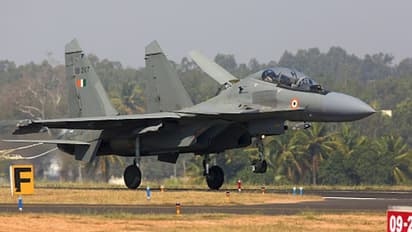'Virupaaksha' for Su-30MKI: IAF to equip fighter with new radar
This endeavour to modernize the Su-30MKI fighters aims to strengthen India's military self-sufficiency, bolster operational readiness, and create export opportunities to other countries operating these fighter jets. Girish Linganna reports
Stay updated with the Breaking News Today and Latest News from across India and around the world. Get real-time updates, in-depth analysis, and comprehensive coverage of India News, World News, Indian Defence News, Kerala News, and Karnataka News. From politics to current affairs, follow every major story as it unfolds. Download the Asianet News Official App to stay informed anytime, anywhere.
Read more Photos on
